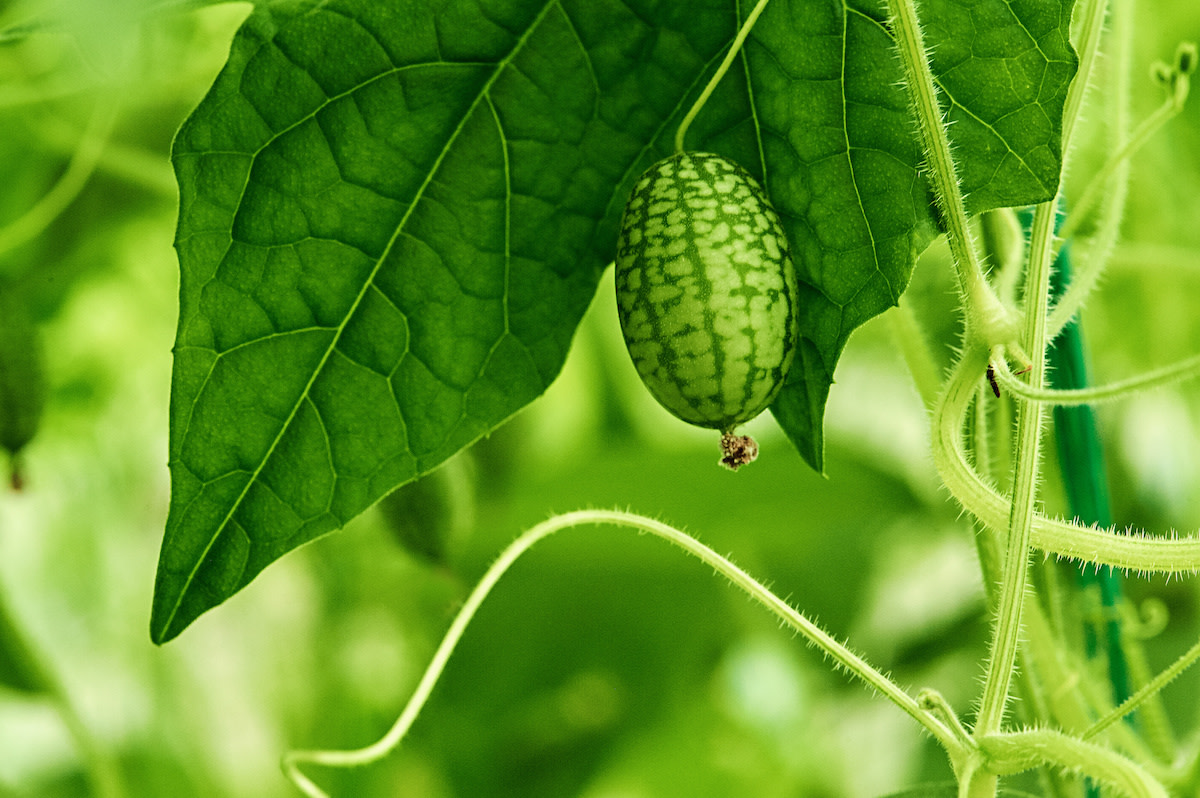Cucamelon Plant Care Tips: How to Grow Cucamelons
Written by MasterClass
Last updated: Nov 23, 2021 • 3 min read
Cucamelons are drought-tolerant plants known for producing fruits that look like miniature watermelons. Learn how to grow cucamelons in your vegetable garden and care for these little fruits throughout the growing season.
Learn From the Best
What Is a Cucamelon?
A cucamelon (Melothria scabra) is a vining plant that belongs to the cucumber/gourd (Cucurbitaceae) family and produces small fruits. While technically neither a cucumber nor a melon, cucamelons look like little watermelons that are the size of a grape. Other common names for the cucamelon include mouse melon, pepquino, sandita, Mexican miniature watermelon, Mexican sour gherkin, and Mexican sour cucumber. Cucamelon plants are native to Mexico and Central America.
Cucamelons taste tangy and make excellent additions to veggie stir-fries. You can purchase cucamelons at a grocery store or farmers market, or you can easily grow your own.
How to Plant Cucamelon Seeds
Cucamelon vines grow fast and yield male flowers and female flowers that self-pollinate. Learn how to plant cucamelon seeds with these growers’ tips.
1. Track frost dates. Cucamelons are hardy and grow well in USDA zones two through eleven. Wait until after the last frost of winter to plant cucamelons.
2. Choose a sunny spot. Cucamelons thrive in at least six hours of full sun per day. In hot climates, partial shade is recommended for cucamelon plants.
3. Use well-draining soil. For the best germination results, plant cucamelon seeds directly in the soil in your garden or in a large container. Add a layer of mulch to well-draining soil to keep your cucamelon plants healthy.
4. Space the seeds appropriately. Space each plant about two feet apart and plant the seeds half an inch deep into the soil. Expect sprouts to appear within two weeks and a root system to become established after two months.
5. Provide a trellis if necessary. Trellises, which are available from most nurseries, can help support this vine vegetable. If you live in a humid climate, using a trellis will keep your cucamelons off the ground and protected from mildew.
How to Grow and Care for Cucamelon Plants
Growing these tiny watermelon lookalikes is relatively easy with a few tips.
- 1. Keep the soil consistently moist. Keep the soil moist but not soggy, providing up to one inch of water each week.
- 2. Fertilize your plants in the summer. Feed your cucamelon plants once in the middle of the summer to encourage a fruitful harvest.
- 3. Overwinter potted cucamelons. Overwintering is recommended if your cucamelons are planted in containers and have produced tubers in their roots. Plant roots develop tubers as storage vessels for energy and nutrients during the growing season. If your cucamelon plant’s roots have tubers, it is an indication that the outdoor temperature is too cold and the plant is going into hibernation. Moving your plant into a pot indoors can help it survive harsh winter conditions.
- 4. Prune your plants in the spring and summer. Keeping the vines adequately pruned during the growing season will help stimulate more cucamelon growth.
How to Harvest Cucamelons
Harvesting cucamelons for optimal freshness is relatively easy with a few simple tips.
- 1. Check the size of your cucamelons. Your cucamelons will be roughly one inch in diameter when they are ready for harvest. Expect your cucamelons to reach this point of maturity about sixty days after planting.
- 2. Cut the fruits from the vine. Use a sharp pair of scissors or gardening shears to cut the cucamelons off the vine. Avoid pulling the cucamelons, as this could damage the plant.
- 3. Store your cucamelons properly. Place your cucamelons in a paper bag and store them in your refrigerator for up to one week. Pickling can help preserve your cucamelons for several weeks.
How to Eat Cucamelons
There are many ways to prepare and eat cucamelons. Consider a few ideas for what to do with these tangy veggies in the kitchen.
- 1. Eat cucamelons fresh from the garden. Picked fresh from your garden, cucamelons have a crisp texture and clean taste.
- 2. Use cucamelons as a garnish. Cucamelons make a creative garnish for cocktails or mocktails. Make a small cut to a cucamelon and attach it to the rim of a cold beverage for a unique twist.
- 3. Pickle cucamelons for sandwiches. Pickled cucamelons make savory yet refreshing ingredients for sandwiches. They also pair well with dill and other fresh herbs.
Learn More
Grow your own garden with Ron Finley, the self-described "Gangster Gardener." Get the MasterClass Annual Membership and learn how to cultivate fresh herbs and vegetables, keep your house plants alive, and use compost to make your community—and the world—a better place.
